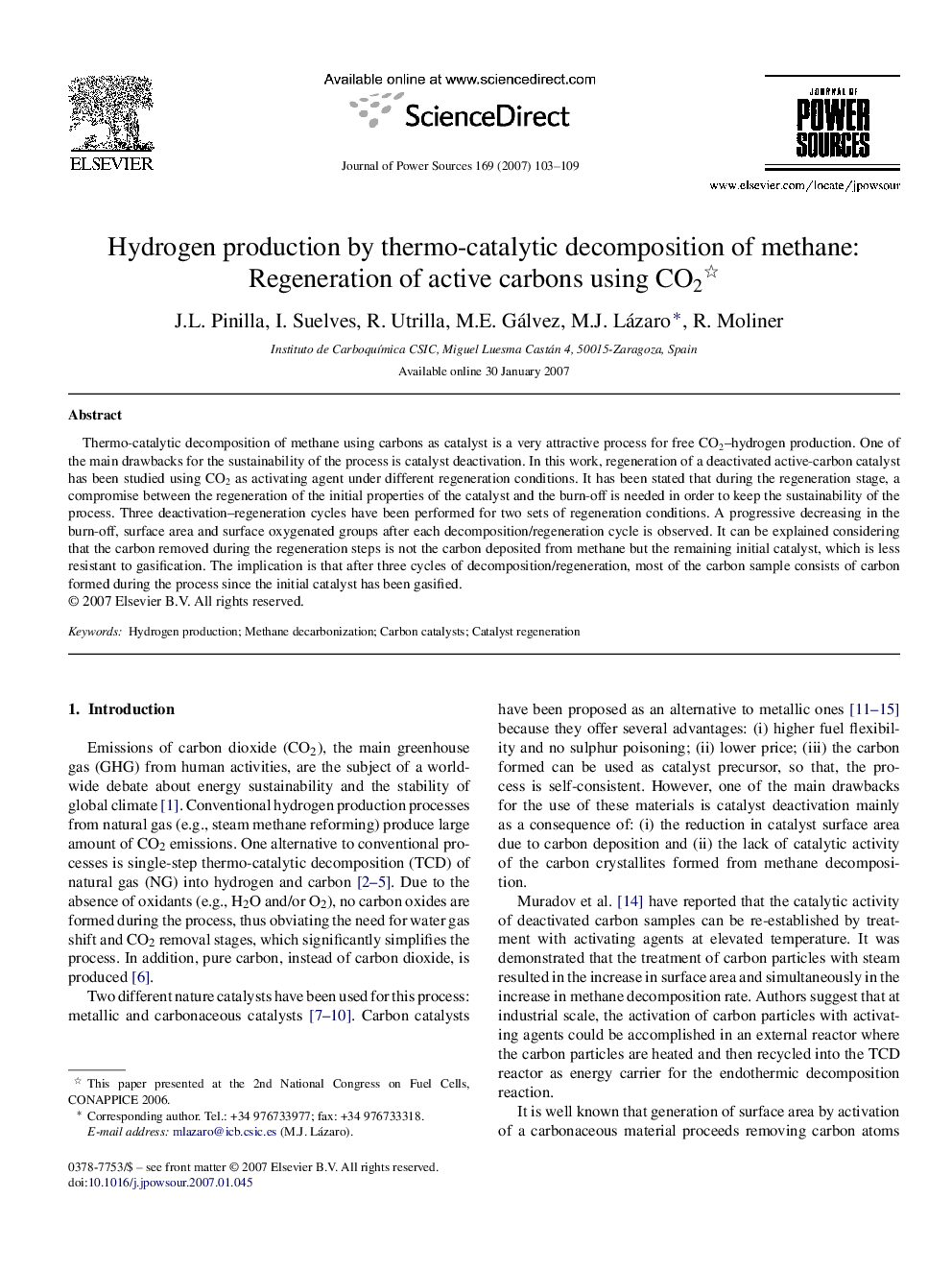| Article ID | Journal | Published Year | Pages | File Type |
|---|---|---|---|---|
| 1291760 | Journal of Power Sources | 2007 | 7 Pages |
Thermo-catalytic decomposition of methane using carbons as catalyst is a very attractive process for free CO2–hydrogen production. One of the main drawbacks for the sustainability of the process is catalyst deactivation. In this work, regeneration of a deactivated active-carbon catalyst has been studied using CO2 as activating agent under different regeneration conditions. It has been stated that during the regeneration stage, a compromise between the regeneration of the initial properties of the catalyst and the burn-off is needed in order to keep the sustainability of the process. Three deactivation–regeneration cycles have been performed for two sets of regeneration conditions. A progressive decreasing in the burn-off, surface area and surface oxygenated groups after each decomposition/regeneration cycle is observed. It can be explained considering that the carbon removed during the regeneration steps is not the carbon deposited from methane but the remaining initial catalyst, which is less resistant to gasification. The implication is that after three cycles of decomposition/regeneration, most of the carbon sample consists of carbon formed during the process since the initial catalyst has been gasified.
